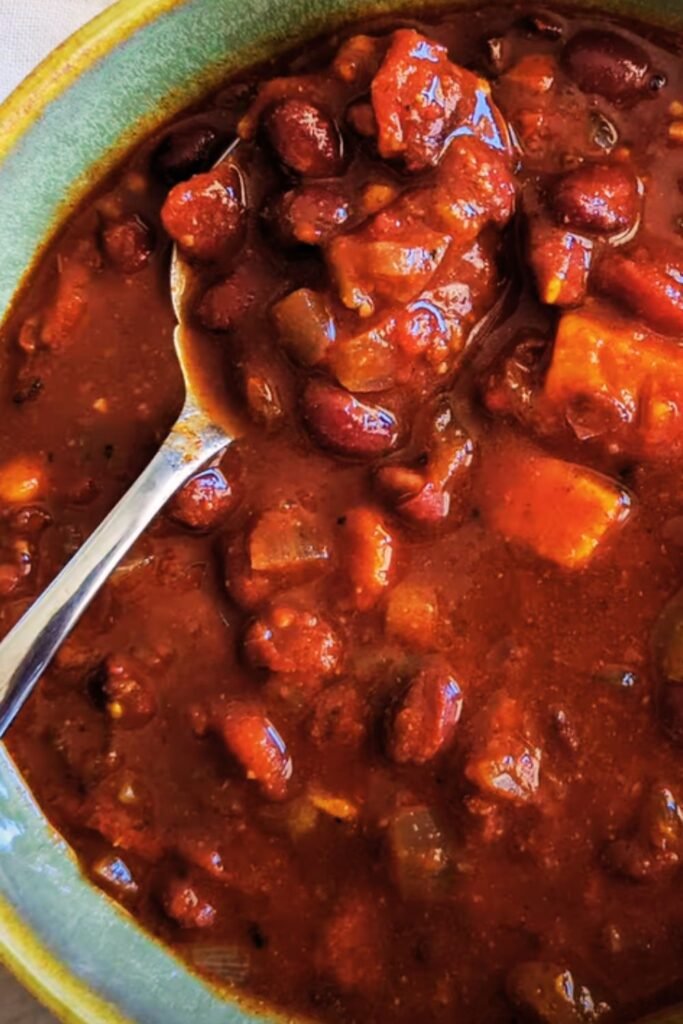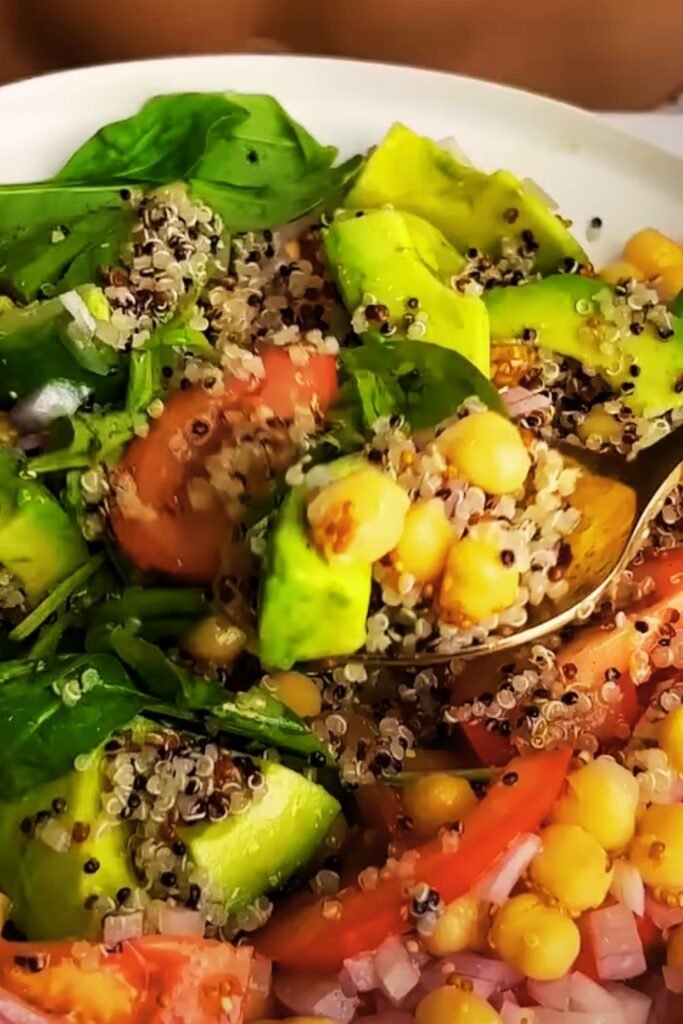As the leaves begin to change and the air turns crisp, I find myself gravitating toward heartier, more comforting meals. Fall brings an abundance of seasonal produce and the perfect opportunity to embrace meal prepping with warming spices, root vegetables, and soul-satisfying dishes. After years of experimenting in my kitchen, I’ve discovered that autumn is actually the ideal time to meal prep – the cooler weather means soups and stews taste even better after sitting overnight, and seasonal ingredients like butternut squash and sweet potatoes store beautifully.
Meal prepping during fall offers unique advantages. The seasonal produce is not only more affordable but also naturally suited for batch cooking. Root vegetables, winter squashes, and hardy greens maintain their texture and flavor when stored, making them perfect candidates for weekly meal preparation. I’ve learned that incorporating warming spices like cinnamon, nutmeg, and sage not only enhances the comfort factor but also provides natural preservation properties.
In this comprehensive guide, I’ll share my favorite 20 fall recipes that are specifically designed for meal prep success. These aren’t just random autumn recipes – they’re carefully selected dishes that actually improve with time, store well, and reheat beautifully. From protein-packed soups to satisfying grain bowls, each recipe comes with detailed storage instructions and nutritional information to help you plan your week effectively.
Understanding Fall Meal Prep Essentials
Seasonal Produce Selection: The foundation of successful fall meal prepping starts with choosing the right ingredients. I’ve found that root vegetables like carrots, parsnips, and sweet potatoes are meal prep champions. They hold their texture well when reheated and actually develop deeper flavors after storage.
Proper Storage Techniques: Fall meals often contain more moisture than summer dishes, which requires specific storage strategies. I always allow soups and stews to cool completely before refrigerating, and I store components separately when possible to maintain optimal texture.
Flavor Development: One advantage of fall cooking is that many dishes taste better the next day. Spices like cumin, paprika, and thyme continue to infuse the food during storage, creating more complex flavors with each passing day.

The Complete Fall Meal Prep Recipe Collection
Hearty Soups and Stews
1. Butternut Squash and White Bean Soup
This creamy, protein-rich soup has become my go-to for busy weeks. The natural sweetness of butternut squash pairs beautifully with cannellini beans, creating a satisfying meal that’s both nutritious and comforting.
Ingredients: 3 lbs butternut squash, 2 cans cannellini beans, 1 large onion, 3 cloves garlic, 4 cups vegetable broth, 1 tsp sage, 1/2 tsp nutmeg, coconut milk
Prep Instructions: Roast cubed squash at 400°F for 25 minutes. Sauté onion and garlic, add roasted squash, beans, and broth. Simmer 20 minutes, blend partially, add seasonings and coconut milk.
Storage: Refrigerate up to 5 days, freeze up to 3 months
2. Moroccan-Spiced Lentil Stew
The warming spices in this stew create an incredibly aromatic meal that transports you to distant markets. I love how the lentils absorb all the flavors during storage, making each reheated portion even more delicious.
Ingredients: 2 cups red lentils, 1 can diced tomatoes, 1 large sweet potato, 1 onion, 2 tsp cumin, 1 tsp cinnamon, 1/2 tsp ginger, 4 cups vegetable broth, fresh cilantro
Storage: Keeps well for 6 days refrigerated, freezes beautifully for 4 months
3. Italian Sausage and Kale Soup
This rustic soup combines the heartiness of Italian sausage with the nutritional powerhouse that is kale. The longer it sits, the more the flavors meld together.
Ingredients: 1 lb Italian sausage, 1 bunch kale, 3 medium potatoes, 1 can cannellini beans, 6 cups chicken broth, 1 onion, 3 garlic cloves, red pepper flakes
Satisfying Grain Bowls
4. Harvest Quinoa Bowl with Maple Tahini Dressing
These colorful bowls showcase the best of fall produce while providing complete proteins. The maple tahini dressing adds the perfect touch of autumn sweetness.
Components: Quinoa base, roasted Brussels sprouts, sweet potato cubes, dried cranberries, pumpkin seeds, maple tahini dressing
Storage Strategy: Store components separately, dress just before eating
5. Wild Rice Pilaf with Cranberries and Pecans
Wild rice’s nutty flavor and chewy texture make it ideal for meal prep. This pilaf improves with time as the cranberries plump and the flavors meld.
Ingredients: 2 cups wild rice, 1/2 cup dried cranberries, 1/2 cup chopped pecans, 1 diced apple, celery, sage, vegetable broth

Protein-Packed Mains
6. Slow Cooker Beef and Sweet Potato Chili
This protein-rich chili combines lean ground beef with fiber-packed sweet potatoes. The slow cooking process creates incredibly tender meat and perfectly soft vegetables.
Ingredients: 2 lbs lean ground beef, 2 large sweet potatoes, 2 cans kidney beans, 1 can diced tomatoes, chili powder, cumin, paprika, onion, bell peppers
7. Turkey and Apple Meatballs with Sage
These moist, flavorful meatballs incorporate seasonal apples for natural sweetness. They freeze exceptionally well and can be used in various meal combinations.
Ingredients: 2 lbs ground turkey, 1 large apple (finely diced), 1/4 cup breadcrumbs, 1 egg, fresh sage, onion powder, salt, pepper
8. Maple Glazed Salmon with Roasted Root Vegetables
The maple glaze caramelizes beautifully and the salmon reheats well when stored properly. Paired with colorful root vegetables, this meal is both elegant and practical.
Vegetarian Comfort Foods
9. Stuffed Acorn Squash with Wild Rice and Mushrooms
These beautiful stuffed squashes are perfect for meal prep because they reheat evenly and maintain their shape. The wild rice filling provides protein and fiber.
Ingredients: 4 acorn squashes, 1 cup wild rice, 8 oz mushrooms, 1/2 cup walnuts, dried cranberries, vegetable broth, thyme, sage
10. Chickpea and Butternut Squash Curry
This warming curry is packed with plant-based protein and actually tastes better after the spices have had time to develop overnight.
Ingredients: 2 cans chickpeas, 3 cups butternut squash, coconut milk, curry powder, turmeric, ginger, garlic, onion, tomatoes

Breakfast Meal Prep Options
11. Pumpkin Spice Overnight Oats
These creamy overnight oats capture all the flavors of fall while providing sustained energy for busy mornings.
Ingredients: Rolled oats, pumpkin puree, chia seeds, maple syrup, pumpkin pie spice, vanilla, milk of choice
12. Sweet Potato and Black Bean Breakfast Hash
This savory breakfast option provides complex carbohydrates and plant-based protein to fuel your morning.
Casseroles and Baked Dishes
13. Butternut Squash Lasagna with Spinach
This lighter take on traditional lasagna uses butternut squash sauce instead of heavy cream. It slices beautifully and reheats perfectly.
14. Shepherd’s Pie with Cauliflower Mash
A healthier version of the classic comfort food, topped with creamy cauliflower mash instead of traditional potatoes.
15. Stuffed Bell Peppers with Turkey and Quinoa
These colorful peppers are filled with a protein-rich mixture and maintain their shape well during storage.
Quick and Easy Options
16. Apple Cider Chicken Thighs
The apple cider creates a beautiful glaze and keeps the chicken incredibly moist during reheating.
17. Roasted Vegetable and Farro Salad
This hearty salad actually improves with time as the farro absorbs the dressing flavors.
18. Turkey Chili with White Beans
A lighter alternative to traditional chili that’s packed with lean protein and fiber.
Sweet Treats and Sides
19. Maple Roasted Carrots and Parsnips
These caramelized root vegetables make an excellent side dish that pairs with virtually any protein.
20. Pumpkin Energy Bites
Perfect for grab-and-go snacks, these energy bites combine pumpkin puree with nuts and seeds.
Comprehensive Meal Prep Planning Guide
Weekly Planning Strategies
I’ve discovered that successful fall meal prepping requires a strategic approach. I typically dedicate 2-3 hours on Sunday for batch cooking, focusing on recipes that serve multiple meals throughout the week. The key is choosing recipes that complement each other and share similar ingredients to minimize waste.
Storage Solutions and Container Selection
Glass Containers: I prefer glass containers for soups and stews because they don’t absorb odors and can go from freezer to microwave safely. The clear design also helps me quickly identify contents.
Portion Control: I use standardized container sizes to ensure consistent portions. This helps with both nutrition tracking and storage efficiency.
Labeling System: Each container gets labeled with contents and date. I use a simple code system that includes reheating instructions.
Nutritional Analysis and Benefits
| Recipe Category | Average Calories/Serving | Protein (g) | Fiber (g) | Prep Time | Storage Life |
|---|---|---|---|---|---|
| Soups & Stews | 280-350 | 15-22 | 8-12 | 45-60 min | 5-6 days |
| Grain Bowls | 320-420 | 12-18 | 10-15 | 30-40 min | 4-5 days |
| Protein Mains | 380-480 | 25-35 | 6-10 | 35-50 min | 4-5 days |
| Casseroles | 340-440 | 20-28 | 7-11 | 60-75 min | 5-6 days |
| Breakfast Items | 250-320 | 8-14 | 6-9 | 15-25 min | 3-4 days |
Seasonal Nutrition Benefits
Fall produce offers unique nutritional advantages. Beta-carotene from orange vegetables supports immune function, while the higher fiber content in root vegetables promotes digestive health. The natural sugars in seasonal fruits provide sustained energy without the crash associated with processed sugars.
Advanced Meal Prep Techniques
Batch Cooking Strategies
Component Cooking: I often prepare components separately – proteins, grains, and vegetables – then combine them in different ways throughout the week. This prevents food fatigue while maximizing efficiency.
Flavor Layering: I’ve learned to build flavors in stages. Base seasonings go in during cooking, while fresh herbs and acids are added just before serving to maintain their vibrancy.
Texture Preservation: Certain vegetables like broccoli and bell peppers are slightly undercooked during initial prep, allowing them to finish cooking during reheating without becoming mushy.
Freezing and Long-term Storage
Freezer-Friendly Recipes: Soups, stews, and casseroles freeze exceptionally well. I portion them in single-serving sizes for quick weekday meals.
Thawing Strategies: I move frozen meals to the refrigerator 24 hours before needed. For faster thawing, I use cold water baths, changing the water every 30 minutes.
Seasonal Shopping and Ingredient Sourcing
Peak Season Produce Guide
September: Apples, butternut squash, Brussels sprouts, sweet potatoes October: Pumpkins, cranberries, pears, winter squash varieties November: Root vegetables, hardy greens, pomegranates, persimmons
Budget-Conscious Shopping Tips
I’ve found that buying seasonal produce in bulk during peak harvest times significantly reduces costs. I purchase extra when items are at their lowest price point and preserve them through proper storage or freezing techniques.
Local and Sustainable Sourcing
Farmers markets offer the freshest seasonal produce, often at competitive prices. I build relationships with vendors who can provide insights into peak ripeness and storage tips.
Reheating and Serving Suggestions
Optimal Reheating Methods
Microwave Techniques: I add a splash of water or broth to prevent drying out. Covering with a damp paper towel creates steam for even heating.
Oven Reheating: For casseroles and baked dishes, I reheat at 350°F covered with foil. This method maintains the original texture better than microwave heating.
Stovetop Revival: Soups and stews often benefit from stovetop reheating, allowing me to adjust consistency and seasoning as needed.
Garnishing and Final Touches
Fresh herbs, a drizzle of quality olive oil, or a sprinkle of nuts can transform a reheated meal into something special. I keep these finishing touches simple but impactful.
Troubleshooting Common Meal Prep Challenges
Texture Issues
Soggy Vegetables: I’ve learned to slightly undercook vegetables during initial preparation. They finish cooking during reheating without becoming mushy.
Dry Proteins: A light coating of sauce or broth during storage prevents proteins from drying out. I also avoid overcooking during initial preparation.
Flavor Degradation
Seasoning Adjustment: Some seasonings fade during storage while others intensify. I keep additional herbs and spices on hand for final adjustments.
Acid Balance: A squeeze of fresh lemon juice or splash of vinegar can brighten flavors that have dulled during storage.
Creating Your Personal Meal Prep System
Establishing Routines
I dedicate specific times for meal prep activities: Sunday morning for shopping, Sunday afternoon for batch cooking, and Wednesday evening for mid-week prep of fresh components.
Equipment Investment
Quality knives, cutting boards, and storage containers make the process more efficient and enjoyable. I view these as long-term investments in my health and time management.
Gradual Implementation
Starting with 2-3 recipes per week allows you to develop your system without becoming overwhelmed. I gradually increased my meal prep repertoire as I became more comfortable with the process.
Questions and Answers
Q: How long can I safely store these fall meal prep recipes in the refrigerator?
Most of the soups, stews, and cooked grain dishes I’ve shared will stay fresh for 4-6 days when properly stored in airtight containers. Proteins like the turkey meatballs and chicken dishes should be consumed within 4-5 days. I always trust my senses – if something looks, smells, or tastes off, I discard it regardless of the timeline.
Q: Which recipes freeze best for longer storage?
The soups and stews freeze exceptionally well for up to 3-4 months. I’ve had great success freezing the butternut squash soup, lentil stew, and both chili recipes. The casseroles also freeze well, though I recommend slightly undercooking them initially since they’ll finish cooking when reheated. Grain bowls should not be frozen as assembled, but components can be frozen separately.
Q: How do I prevent my vegetables from getting mushy during meal prep?
I slightly undercook vegetables during the initial preparation, knowing they’ll finish cooking during reheating. For vegetables like Brussels sprouts and broccoli, I roast them until they’re just tender but still have a slight bite. I also store wet and dry components separately when possible – for example, keeping dressings separate from salad greens.
Q: Can I modify these recipes to accommodate dietary restrictions?
Absolutely! Most of these recipes are quite flexible. For gluten-free options, substitute quinoa or rice for any wheat-based grains. Many recipes are naturally dairy-free or can be made so by using coconut milk instead of regular milk. For lower-carb versions, substitute cauliflower rice for regular grains or use zucchini noodles in place of pasta.
Q: What’s the best way to reheat different types of meal prepped foods?
For soups and stews, I prefer stovetop reheating because it allows me to stir and adjust consistency. Casseroles and grain bowls reheat well in the oven at 350°F, covered with foil. When using the microwave, I always add a splash of liquid and cover the food to create steam. The key is reheating gently to preserve texture and prevent drying out.
Q: How do I maintain variety when meal prepping with seasonal ingredients?
I rotate spice profiles throughout the week – Monday might be Mediterranean-inspired with oregano and lemon, while Wednesday features warming Indian spices. I also prep components that can be combined differently: roasted vegetables can top grain bowls one day and be pureed into soup another day. Keeping a variety of sauces and dressings on hand helps transform the same base ingredients into completely different meals.
Q: Should I invest in special meal prep containers?
While you don’t need expensive containers, having the right storage solutions makes a significant difference. I recommend glass containers with tight-fitting lids for soups and stews because they don’t absorb odors and can go from freezer to microwave safely. For portion control, having containers in consistent sizes helps with planning. Mason jars work wonderfully for overnight oats and layered salads.
Q: How do I calculate proper portion sizes for meal prepping?
I typically aim for balanced meals with about 4-6 oz of protein, 1/2 to 1 cup of grains or starchy vegetables, and 1-2 cups of non-starchy vegetables. For soups, I plan on 1.5-2 cup servings. I’ve found that preparing slightly larger portions initially allows flexibility – you can always eat a smaller portion if you’re not as hungry, but you can’t add more if the container is empty.
Q: What should I do if I get tired of eating the same meals all week?
This is why I love preparing components separately when possible. The same roasted vegetables can be used in grain bowls, added to eggs for breakfast, or pureed into soup. I also keep a selection of different sauces, herbs, and spices to change up flavors throughout the week. Sometimes I’ll prepare two different proteins or grain bases so I have more variety in my combinations.
Q: How far in advance can I do my meal prep shopping?
For the best quality, I shop no more than 1-2 days before my prep day. Root vegetables and winter squashes can be purchased up to a week ahead and stored in a cool, dark place. More delicate items like fresh herbs should be purchased just before use. I keep a running grocery list throughout the week, adding items as I think of them, then do one focused shopping trip before my prep session.